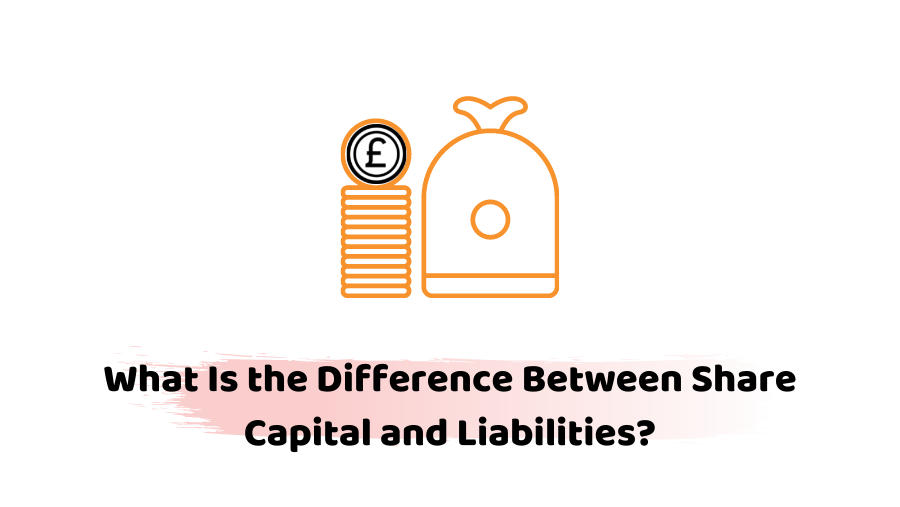We all know that at the end of a tax year, there has to be an annual financial report to exhibit the financial position of the company. In this regard, the balance sheet plays a vital role and we know the balance sheet as a statement of financial position. The discussion of share capital vs liabilities is free from the doubt that both of them are line items in a balance sheet.
The balance sheet equation tells the financial position of a company. It depends on the accounting equation which is also known as. The accounting equation is:
Assets = Liabilities + Equity
Moreover, both share capital and liabilities are the items that belong to the balance sheet. However, there are some points that make the differences prominent between them.
Speak to one of our qualified accountants? Give us a call on 02034411258 or request a callback. We are available from 9:00 am – 05:30 pm Monday to Friday.
A Basic Understanding of Share Capital
Share capital refers to the contribution of the owner in a business for small entities. This means the amount of money that an owner has contributed to the industry for the exchange of business shares. All limited companies are required to have one share at least.
The nominal value of these ordinary shares is £1. The shareholder has to pay £1 for every share they expect to issue. This depends on the capital structure of a company that decides the degree of control every shareholder may own as well as the percentage of the profit.
In the case of issuing only one share, this means that 100% control and profits will belong to the owner of the share. On the other hand, if two shares are issued, both the shareholders will own 50% shares and so on.
Furthermore, the issuance of shares has no limit. the maximum number of shares is decided when the company is set up. The classes of shares include the following:
- Redeemable Shares: These are the shares that are issued on the condition that the company will buy in the future whenever it wants to.
- Preference Shares: The owners of these shares have to pay dividends before other shareholders. This makes them receive the money-back first in the case of liquidation. If the company has external funding, the investors can demand preferential shares.
An Introduction to Liabilities
Anything that your business owes to clients, own employees, suppliers, and banks come under liabilities. They have the right to launch a lawsuit against your business and the court will make you pay them. There is a concept of an ideal scenario theoretically when your business does not have any debts, however, this is rare.
The terms including equity and assets belong to the liabilities as well in the world of accounting.
Types of liabilities are divided in:
1- Current Liabilities: Such liabilities are to be paid within the time period of a year or less. This helps to define the liquidity of a business as well. Moreover, current liabilities include the following:
- Taxes
- Salaries
- Bank Loans
- Accounts Payable
2- Long Term Liabilities: As the name explains for itself, long-term liabilities can take more than a year time to pay off. Some examples of long term liabilities are listed below:
- Pension Obligations
- Deferred Tax Liabilities
- Loans that can be paid off after a year.
- Lease and other capital payments can be paid off after a year.
Get an instant quote based on your requirements online in under 2 minutes, Sign up online or request a callback.
Share Capital VS Liabilities
There is no doubt that share capital and liabilities aim to acquire cash for the business, however, they are obtained in a very different manner.
- Share capital purely refers to the amount of money that a shareholder has contributed to the business, whereas the liabilities refer to the money that your business owes to other companies.
- Issuance of share capital raises money that a company owns but the money that is obtained through loans has to be paid off with interest to its lender.
- Shareholders get the dividends, however, the lenders get the interest amount.
- There is a possibility of selling or transferring the shares, however, there is no way to sell or transfer the liabilities.
- In a liquidation scenario, the creditors will be paid back before shareholders.
The Bottom Line
To sum up the discussion after developing an understanding of share capital VS liabilities, we may hope to carry out in the business world in a more confident manner. To maintain balance among the above-discussed factors, a business valuation will increase and you will be able to make the right business choices.
Whether you are looking for compliance-only services, all-inclusive packages with monthly support, keen to outsource your full accounts department, or intending to take your business to the next level. If you are looking for a Clever accountant in London for your business, get in touch with us.
Disclaimer: The information about share capital VS liabilities provided in this article including text, graphics, and images is general in nature and does not intend to disregard any professional advice.





















































